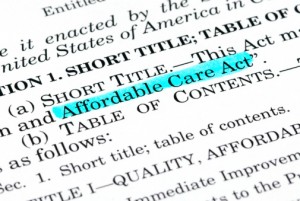
Associate Professor, Accounting and Finance at American Public University
It is likely that many taxpayers will find a tax penalty for not complying with the Affordable Care Act based on survey results that indicate the popularity of the act.
The Rasmussen Report for April 7 published the follow survey results:
Monday, April 07, 2014
Unfavorable opinions of the new national health care law are at their highest level in several months, while the number who think the quality of care in this country will get worse is at its highest level in over three years.
The latest Rasmussen Reports national telephone survey finds that 58% of likely U.S. Voters have at least a somewhat unfavorable opinion of the health care law, with 43% who view it very unfavorably. Just 39% have a favorable view of the law, including 16% with a very favorable one.
Starting January 1, 2014, taxpayers are subject to the Individual Shared Responsibility Payment if they don’t have health insurance and do not qualify for an exemption. For 2014, the annual payment amount is:
- The greater of:
- 1 percent of your household income that is above the tax return filing threshold for your filing status
- Your family’s flat dollar amount, which is $95 per adult and $47.50 per child, limited to a family maximum of $285
- But capped at the cost of the national average premium for a bronze level health plan available through the Marketplace in 2014.
Some examples of computations for the payment amount were provided by the IRS.
Example 1: Single individual with $40,000 income
Jim, an unmarried individual with no dependents, does not have minimum essential coverage for any month during 2014 and does not qualify for an exemption. For 2014, Jim’s household income is $40,000 and his filing threshold is $10,150.
- To determine his payment using the income formula, subtract $10,150 (filing threshold) from $40,000 (2014 household income). The result is $29,850. One percent of $29,850 equals $298.50.
- Jim’s flat dollar amount is $95.
Because $298.50 is greater than $95 (and is less than the national average premium for bronze level coverage for 2014), Jim’s shared responsibility payment for 2014 is $298.50, or $24.87 for each month he is uninsured (1/12 of $298.50 equals $24.87).
Jim will make his shared responsibility payment for the months he was uninsured when he files his 2014 income tax return, which is due in April 2015.
Example 2: Married couple with 2 children, $70,000 income
Eduardo and Julia are married and have two children under 18. They do not have minimum essential coverage for any family member for any month during 2014 and no one in the family qualifies for an exemption. For 2014, their household income is $70,000 and their filing threshold is $20,300.
- To determine their payment using the income formula, subtract $20,300 (filing threshold) from $70,000 (2014 household income). The result is $49,700. One percent of $49,700 equals $497.
- Eduardo and Julia’s flat dollar amount is $285, or $95 per adult and $47.50 per child. The total of $285 is the flat dollar amount in 2014.
Because $497 is greater than $285 (and is less than the national average premium for bronze level coverage for 2014), Eduardo and Julia’s shared responsibility payment is $497 for 2014, or $41.41 per month for each month the family is uninsured (1/12 of $497 equals $41.41).
The penalty computations shown above are for 2014 only. Congressional action could alter or eliminate the penalty for future years.
About the Author
Dr. Whitley has an MBA from the University of Houston and a Doctorate in Education from the University of Alabama. Dr. Whitley has been teaching accounting and finance for over 25 years. Dr. Whitley is a CPA and he maintains a tax practice in Alabama.

Comments are closed.